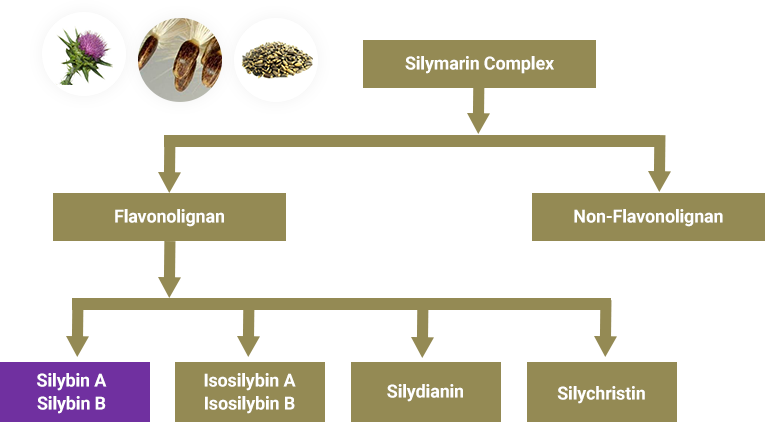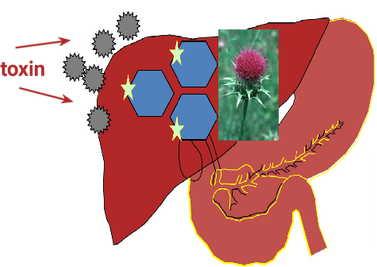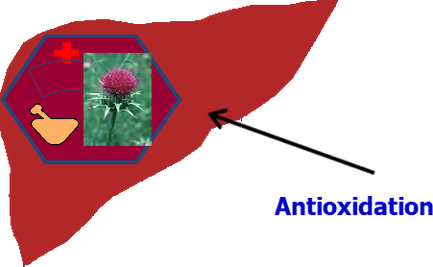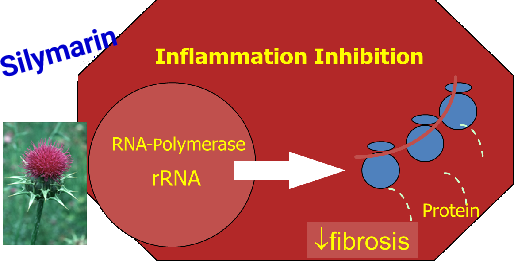The Natural Alternative in Liver Health
Current lack of approved treatment for liver disorders
Presently there are no approved modern medications for the treatment of liver diseases, including the most common alcoholic and nonacoholic fatty liver diseases, and drug-induced hepatitis, and for liver detoxification. The first line of treatments usually has been losing weight—which helps reduce fat, inflammation and scarring of the liver—and refraining from drinking alcohol
In the absence of approved drugs, the use Silymarin compounded in formulations has been on the rise in recent years. An active compound of the flowering plant Milk Thistle, Silymarin (Silybum marianum) has been used for centuries in treating various liver disorders.
There are two flavonoids in Silymarin—Silybin A and Silybin B—which are concentrated in the seeds of the Milk Thistle flower that have shown strong liver protective actions.

 Silybin A
Silybin A Silybin B
Silybin BSilymarin exhibits hepatoprotective and regenerative properties, and is one of the most widely used natural compounds for the treatment of hepatic diseases worldwide, due to its antioxidant, anti-inflammatory, and antifibrotic activities. Silymarin also increases hepatic levels of glutathione by raising cysteine availability, while inhibiting its catabolism to taurine that may enhance the antioxidant defense in liver. (Antioxidant Treatment and Alcoholism--Camila S. Silva PhD, ... Helio Vannucchi MD, PhD, in Molecular Aspects of Alcohol and Nutrition, 2016)
Silymarin is one of the best examples how new therapeutic agents can be developed from traditional herbal medicine and is one of the most studied medicinal herbs in the treatment of nonalcoholic fatty liver disease (NAFLD) (Abenavoli and Bellentani, 2013). The application of silymarin in the treatment of the NAFLD patients seems to be useful due to its various pharmacological activities, and in particular anti-inflammatory, antifree radicals and antifibrotic actions (Milosević et al., 2014). Furthermore, silymarin metabolic activity contributes to its beneficial effect in the patients who suffer from NAFLD. Silymarin blocks glucose-6-phosphate hydrolysis and thus inhibits gluconeogenesis and glycogenolysis, decreases pyruvate kinase activity, lowers the production of glycose and reduces the uptake of glucose by adipocytes (Abenavoli et al., 2011).
Silymarin today is the most commonly used medication for various liver diseases. In clinical trials, 140 mg of Silymarin once daily was observed to be an effective therapy. In a randomized double-blind placebo-controlled clinical trial, most of the volunteers receiving silymarin (140 mg) had improved levels of hemoglobin and erythrocyte sedimentation rate. The disease activity index (DAI) decreased in the silymarin group. Thirty-five out of 38 patients in the silymarin group were in complete remission with no flare-up after 6 months as compared to 21 out of 32 patients in the placebo group. (Manjeshwar Shrinath Baliga, ... Raja Fayad, in Polyphenols in Human Health and Disease, 2014)
Mechanism of Action
 Anti-hepatotoxic Activity
Anti-hepatotoxic Activity
Stabilization of hepatocytes by inhibition of hepato toxin binding to receptor sites on hepatocyte membranes.

Membrane Effect
- Regulate membrane permeability
- Increase membrane stability
 Antiperoxidative Effects
Antiperoxidative Effects
Reduction of glutathione oxidation to increase glutathione levels in the liver and intestnies; antioxidant activity

 Metabolic Effect
Metabolic Effect
Stimulation of ribosomal RNA polymerase and sbsequent protien synthesis, leading to enhanced hepatocyte regeneration.




 Anti-hepatotoxic Activity
Anti-hepatotoxic Activity